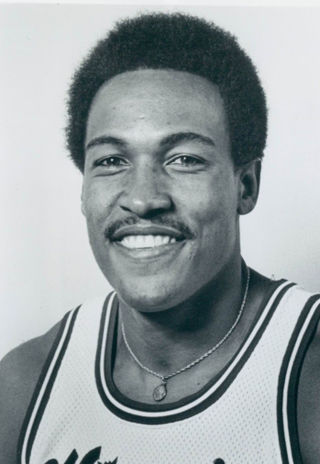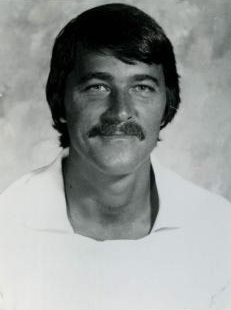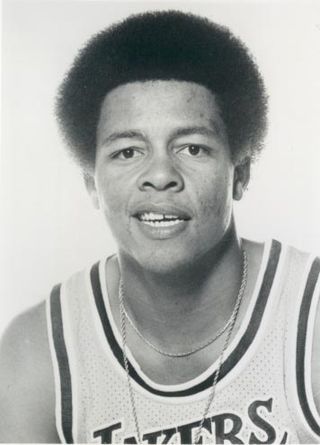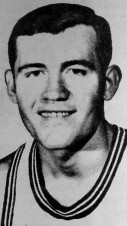Related Research Articles

The Utah Stars were an American Basketball Association (ABA) team based in Salt Lake City, Utah. Under head coach Bill Sharman the Stars were the first major professional basketball team to use a pre-game shootaround.
The Baltimore Claws were an American basketball team which was supposed to appear in the 1975–76 season in the American Basketball Association. The team collapsed before the season started, playing only three exhibition games, all losses, in its brief history.

The Kentucky Colonels were a member of the American Basketball Association (ABA) for all of the league's nine years. The name is derived from the historic Kentucky Colonels. The Colonels won the most games and had the highest winning percentage of any franchise in the league's history, but the team did not join the National Basketball Association (NBA) in the 1976 ABA–NBA merger. The downtown Louisville Convention Center was the Colonels' venue for their first three seasons before moving to Freedom Hall for the remaining seasons, beginning with the 1970–71 schedule.

The Memphis Sounds were an American professional sports franchise that played in Memphis, Tennessee from 1970 until 1975 as a member of the American Basketball Association. The team was founded as the New Orleans Buccaneers in 1967.

Ronald Bruce Boone is an American former professional basketball player. He had a 13-year career in the American Basketball Association (ABA) and National Basketball Association (NBA). Boone set a record for most consecutive games played in professional basketball history with 1,041 and claims to have never missed a game from when he started playing basketball in the fourth grade until his retirement. Boone is the current color commentator on Utah Jazz broadcasts.

Louis Dampier is an American retired professional basketball player.
Thomas Edward Nissalke was an American professional basketball coach in the National Basketball Association and American Basketball Association. He coached several teams in both leagues, and had an overall coaching record of 371–508.

Mack Calvin is an American former basketball player. A five-time ABA All-Star, Calvin recorded the second most assists in ABA history, and was later named to the ABA All-Time Team.

Larry Jones is an American former professional basketball player. He most notably played in the American Basketball Association (ABA), where he was the first player to reach 5,000 career points. He also had shorter stints in the rival National Basketball Association (NBA).

Robert Netolicky is a retired American basketball player. A 6'9" power forward/center, he played professionally in the now–defunct American Basketball Association (ABA) from 1967 to 1976. Netolicky was a four–time ABA All–Star and two–time ABA Champion.

Glen Courtney Combs is a retired American basketball player.

The ABA All-Time Team were chosen in 1997 on the 30th anniversary of the founding of the American Basketball Association (ABA). It comprised the 30 best and most influential players of the ABA during its ten years and nine full regular seasons of operation, with respect not only to performance at the professional level, but in consideration of sportsmanship, team leadership, and contributions to the growth of the league basketball, and irrespective of positions played. Only players who have played at least a portion of their careers in the ABA were eligible for selection, although performance in other leagues, most notably the National Basketball Association was considered. Selected and announced beside the all-time team were a most valuable player and top head coach.
Utah Rockies was the name under which the Spirits of St. Louis were to play during the ultimately aborted 1976–77 American Basketball Association (ABA) season.
The 1976–77 NBA season was the Spurs first season in the NBA. Months earlier, the Spurs were part of the American Basketball Association. The ABA had ended its ninth and last campaign. Of the seven remaining ABA teams, four joined the NBA: the Denver Nuggets, New York Nets, Indiana Pacers and San Antonio Spurs. The Kentucky Colonels and Spirits of St. Louis agreed to take a cash settlement and cease operations. Immediately, the ABA players were dispersed across the new 22-team league. The other ABA teams from the prior season were all folded prior to the ABA–NBA merger: the Baltimore Claws, Utah Stars, San Diego Sails and Virginia Squires.
The 1975–76 American Basketball Association season saw the demise of the Baltimore Claws franchise.

The ABA–NBA merger was a major pro sports business maneuver in 1976 when the American Basketball Association (ABA) combined with the National Basketball Association (NBA), after multiple attempts over several years. The NBA and ABA had entered merger talks as early as 1970, but an antitrust suit filed by the head of the NBA players union, Robertson v. National Basketball Ass'n, blocked the merger until 1976.
The 1975–76 ABA season was the ninth and final season of the American Basketball Association. The shot clock was changed from 30 to 24 seconds to match the NBA. Dave DeBusschere was the league's new commissioner, its seventh and last. This was also the only season that did not use the East-West division setup. The NBA would adopt the ABA's three-point shot for the 1979–80 season.
The 1970–71 ABA season was the fourth season of the American Basketball Association.
The American Basketball Association draft was held from 1967 to 1975. Generally speaking, the ABA's drafts were considered a lot looser in terms of structure for teams to make their player choices when compared to the rivaling NBA. So much so, in fact, that in 1973, the ABA would host four different drafts that essentially held the same type of purpose at various different points of the year, while in 1974, the ABA would not only host a draft for college-based players, but also a draft for NBA players to be taken by ABA teams as well. In addition to that, according to former Washington Caps and Virginia Squires head coach Al Bianchi, the ABA would host their drafts on the drop of a hat and if a team wanted someone even after their draft was officially over and done with, they'd put him on their draft list anyway, which would later influence the rivaling NBA draft system during the 1970s decade. Due to the secretive nature of the league's early drafts alongside their looser structures, not much is known about the draft records of where certain players were selected in which round early on outside of who the #1 pick of each draft was.
The 1971–72 ABA season was the fifth season of the American Basketball Association. The Indiana Pacers won the championship, defeating the New York Nets, 4 games to 2, in the ABA Finals.
References
- 1 2 3 Overpeck, Keith (January 21, 1976). "Wrong place, wrong time". The Courier-Journal . Retrieved November 25, 2017– via Newspapers.com.(subscription required)
- ↑ Maleval, Jean-Jacques (April 16, 1975). "Professionnalisme européen – Go home!" [European professionalism – Go home!](PDF). L'Équipe basket hebdomadaire (in French). Vol. 31. pp. 8–9. Retrieved November 25, 2017.